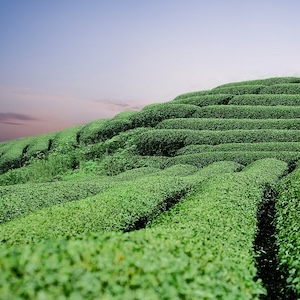Application of MOS gas sensors for detecting mechanical damage of tea plants

Published: 2 December 2024
Abstract Views: 240
PDF: 140
HTML: 21
HTML: 21
Publisher's note
All claims expressed in this article are solely those of the authors and do not necessarily represent those of their affiliated organizations, or those of the publisher, the editors and the reviewers. Any product that may be evaluated in this article or claim that may be made by its manufacturer is not guaranteed or endorsed by the publisher.
All claims expressed in this article are solely those of the authors and do not necessarily represent those of their affiliated organizations, or those of the publisher, the editors and the reviewers. Any product that may be evaluated in this article or claim that may be made by its manufacturer is not guaranteed or endorsed by the publisher.
Similar Articles
- George Ashwehmbom Looh, Fangping Xie, Xiushan Wang, Augustine Ngiejungbwen Looh, Hamdaoui Hind, Grain kernel damage during threshing: a comprehensive review of theories and models , Journal of Agricultural Engineering: Vol. 56 No. 1 (2025)
- Marko Milan Kostić, Nataša Ljubičić, Vladimir Aćin, Milan Mirosavljević, Maša Budjen, Miloš Rajković, Nebojša Dedović, An active-optical reflectance sensor in-field testing for the prediction of winter wheat harvest metrics , Journal of Agricultural Engineering: Vol. 55 No. 1 (2024)
- Bayu Taruna Widjaja Putra, Wahyu Nurkholis Hadi Syahputra, Parawita Dewanti, Effect of different photoperiod regimes in combination with natural and artificial light on nutrient uptake in bok choy (Brassica rapa L.) using an internet of things-based hydroponics system , Journal of Agricultural Engineering: Vol. 55 No. 3 (2024)
- Martin Thalheimer, A leaf-mounted capacitance sensor for continuous monitoring of foliar transpiration and solar irradiance as an indicator of plant water status , Journal of Agricultural Engineering: Vol. 54 No. 1 (2023)
- Remo Alessio Malagnino, Performance analysis of photovoltaic plants installed in dairy cattle farms , Journal of Agricultural Engineering: Vol. 46 No. 2 (2015)
- Albert Min, Nam Nguyen, Liam Howatt, Marlowe Tavares, Jaho Seo, Aeroponic systems design: considerations and challenges , Journal of Agricultural Engineering: Vol. 54 No. 1 (2023)
- Andrea Dell'Agnese, Bruno Mazzorana, Francesco Comiti, Patricia Von Maravic, Vincenzo D'agostino, Assessing the physical vulnerability of check dams through an empirical damage index , Journal of Agricultural Engineering: Vol. 44 No. 1 (2013)
- Giuliano Vox, Pierfrancesco Losito, Fabio Valente, Rinaldo Consoletti, Giacomo Scarascia-Mugnozza, Evelia Schettini, Cristoforo Marzocca, Francesco Corsi, A wireless telecommunications network for real-time monitoring of greenhouse microclimate , Journal of Agricultural Engineering: Vol. 45 No. 2 (2014)
- Shanwen Zhang, Yongyuan Sun, Su Lu, Li Wang, Sian Liu, Zhongliu Wang, Min Dai, Jicheng Gao, Hong Miao, Design and experiment of brush-roller ginkgo leaf picker for the dwarf dense planting mode , Journal of Agricultural Engineering: Vol. 54 No. 4 (2023)
- Alessandro Biglia, Francesco Gresta, Davide Lucien Patono, Lorenzo Comba, Claudio Lovisolo, Paolo Gay, Andrea Schubert, Identification of drought-salinity combined stress in tomato plants by vegetation indices , Journal of Agricultural Engineering: Vol. 55 No. 4 (2024)
You may also start an advanced similarity search for this article.

 https://doi.org/10.4081/jae.2024.1647
https://doi.org/10.4081/jae.2024.1647 











